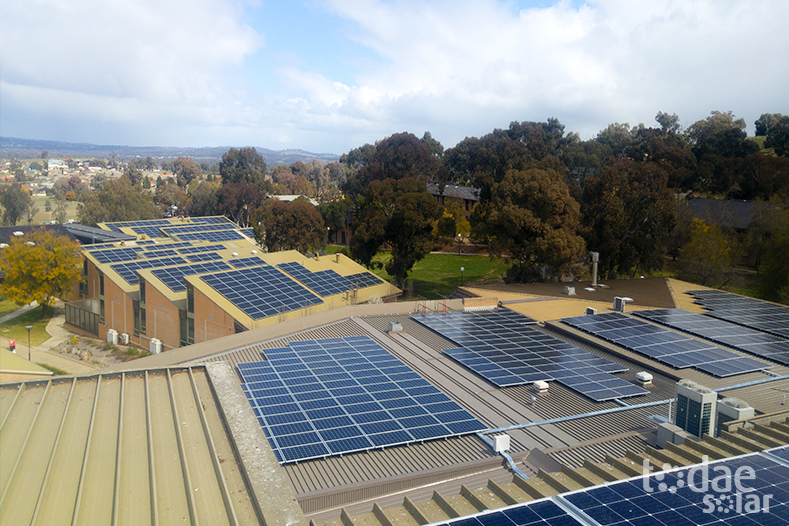Australian universities are increasingly relying on solar power in catering to their energy needs, looking to bring down energy costs, and to show leadership on climate change.
As one of the pioneers in deploying rooftop solar at its campus, New South Wales’ Charles Sturt University (CSU) has begun the installation of solar panels that will provide the University with over 2.5 MW of renewable energy across its Albury, Bathurst, Dubbo and Orange campuses.
The installation will add to the existing 1.77 MW solar energy generation capacity, sprawling across 17 buildings at CSU’s regional campus in Wagga Wagga.
Touted as a milestone installation among Australia’s fast-growing C&I PV market segment and one of Australia’s largest solar rooftop projects on a single site, the Stage 1 array was switched on last November.
To foot the $3.2 million bill, CSU entered into a 10-year financing agreement, with loan repayments below the electricity savings delivered by the PV.
As Edward Maher, the Manager of CSU’s environmental initiatives, told pv magazine Australia, the 1.77 MW system was expected to pay for itself predominantly via savings on electricity bills and had been supplemented by a commitment to sell LGCs for the first seven years of operation.
The Stage 1 array was delivered by Todae Solar, Sydney-based commercial rooftop solar specialists, which has also been awarded the second stage.
In addition to creating jobs for local firms, the project will also ensure substantial savings.
“This expansion provides nearly $6 million in savings over a conventional power plan so it brings triple bottom line benefits to the campuses and the University as a whole,” said CSU Green’s Energy Project Officer Gareth Johnston, noting that CSU is likely to build some further renewables on campus where possible.
On-site renewable energy generation is a critical part of CSU’s aspirations to source all of its energy needs from renewable sources, being Australia’s first certified carbon neutral university.
“This new solar project means that over 7,100 panels will cover over 50 buildings saving over 3,000 tonnes of CO2 emissions every year over the life of the project compared to emissions-intensive conventional energy,“ Johnston said, adding that the annual energy generated is equivalent to that used by around 580 family homes.
This content is protected by copyright and may not be reused. If you want to cooperate with us and would like to reuse some of our content, please contact: editors@pv-magazine.com.









1 comment
By submitting this form you agree to pv magazine using your data for the purposes of publishing your comment.
Your personal data will only be disclosed or otherwise transmitted to third parties for the purposes of spam filtering or if this is necessary for technical maintenance of the website. Any other transfer to third parties will not take place unless this is justified on the basis of applicable data protection regulations or if pv magazine is legally obliged to do so.
You may revoke this consent at any time with effect for the future, in which case your personal data will be deleted immediately. Otherwise, your data will be deleted if pv magazine has processed your request or the purpose of data storage is fulfilled.
Further information on data privacy can be found in our Data Protection Policy.